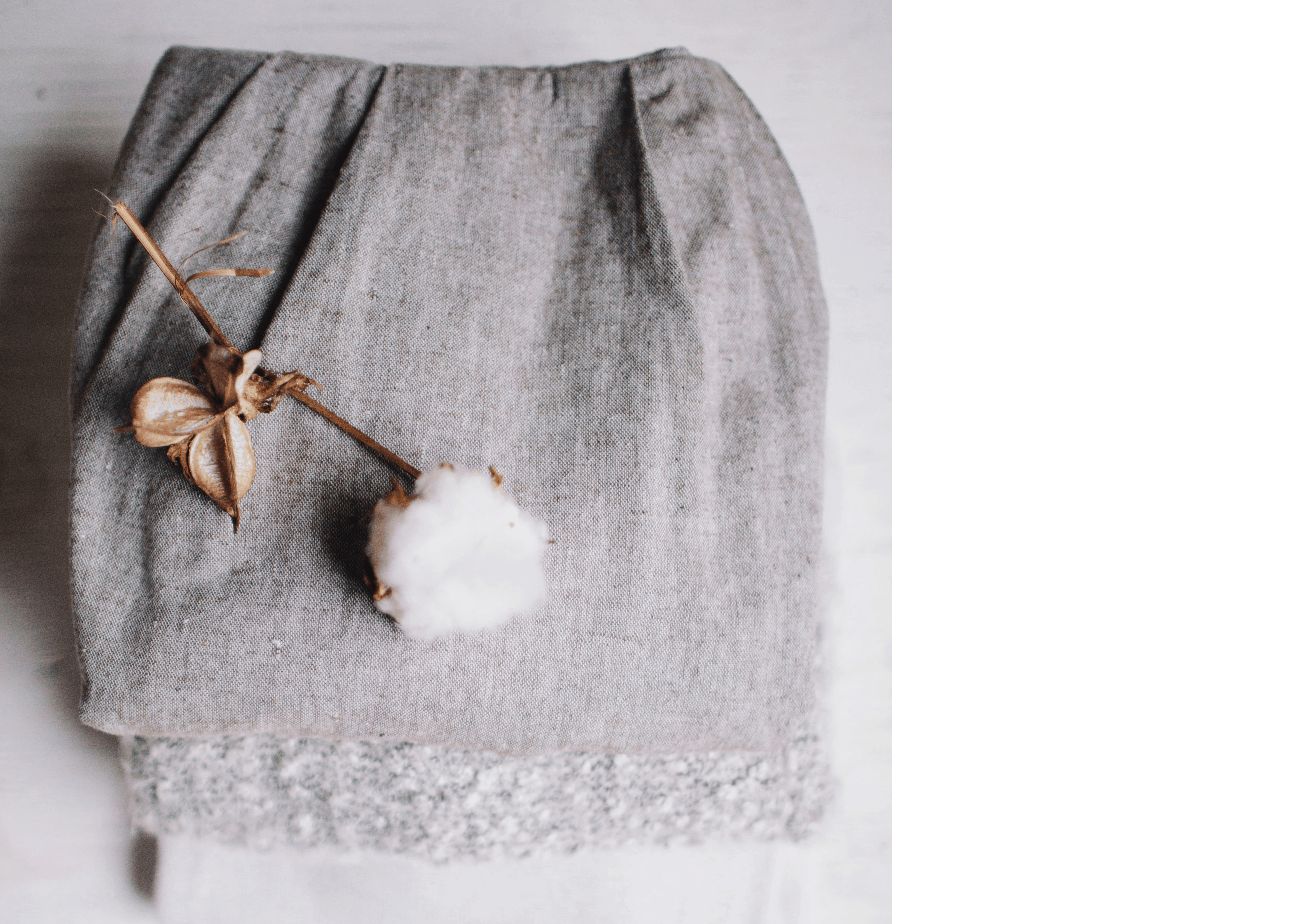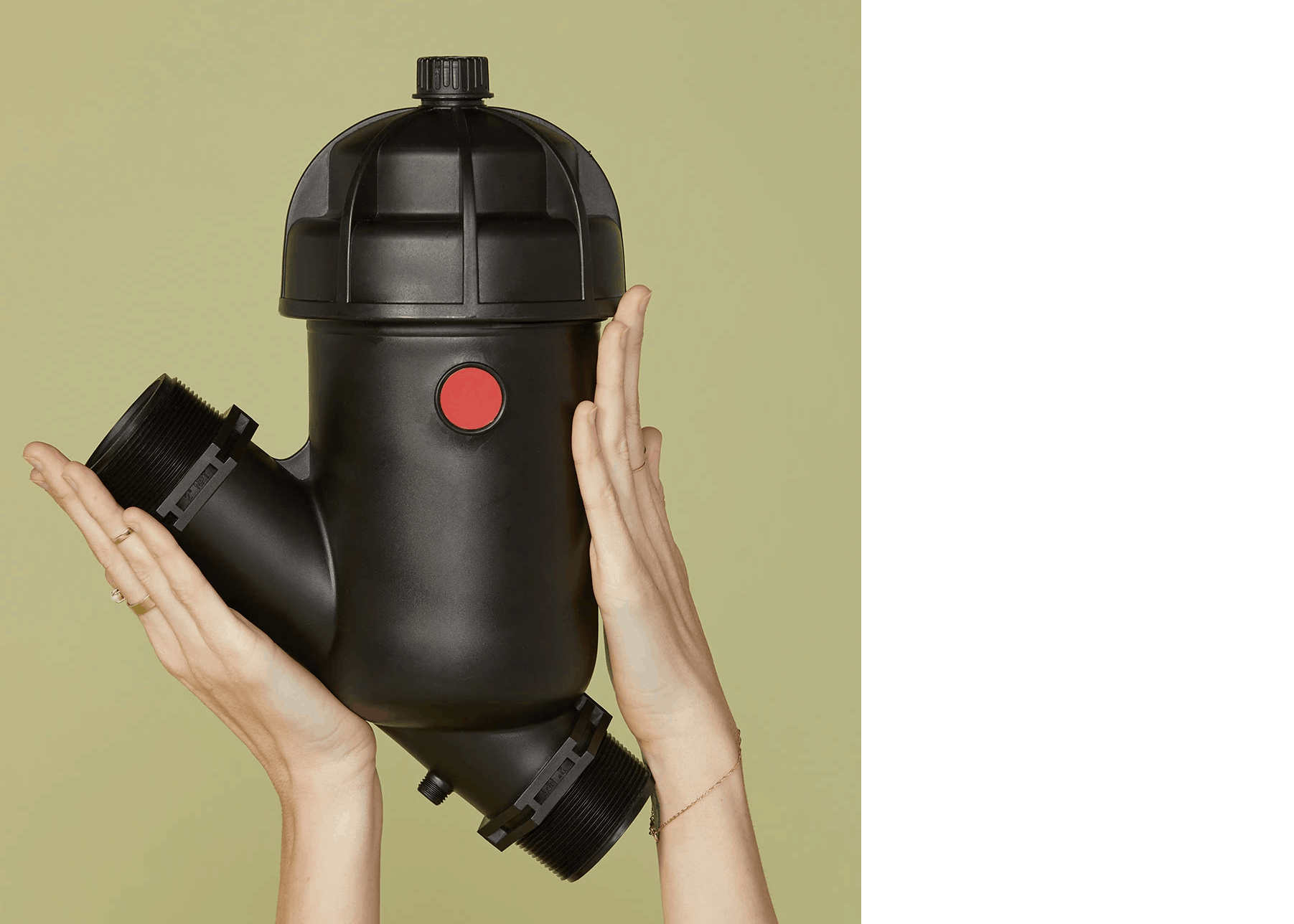What are microplastics and what fabrics are made with plastic?
Plastic never fully breaks down or biodegrades. It just breaks apart into smaller pieces. When plastic fibres start to fray, the tiny pieces left behind are called microplastics. But what does this have to do with laundry?
A lot of our everyday fabrics are made with plastic. That’s right. Fabrics like: polyester, nylon, fleece, elastane, spandex and more contain plastic. When we do a load of laundry, microplastics shed from our clothes when they rub together. The microplastics are then drained through our washing machines and can eventually end up polluting the ocean and other waterways. Fish often eat these particles, which then introduces microplastics to the food chain.
So how can we help prevent microplastics from entering our waterways?
Solution 1: Buy clothes made from eco-friendly materials
 Photo by Mia Moessinger on UnsplashOne solution is to purchase clothing made from cotton, hemp or linen, instead of plastic-containing fabrics. These types of fabric contain no plastic and won’t contribute to the earth’s growing microplastic problem.
Photo by Mia Moessinger on UnsplashOne solution is to purchase clothing made from cotton, hemp or linen, instead of plastic-containing fabrics. These types of fabric contain no plastic and won’t contribute to the earth’s growing microplastic problem.
Solution 2: Try a filter bag
 GuppyFriendGuppyFriend Bags are laundry bags that help filter out microplastics and stop them from leaking from your machine into the ocean. Once you’re done washing, you simply take the microplastics out of the bag and dispose of them properly. GuppyFriend donates profits from their bags to different organizations that raise awareness about microplastic pollution.
GuppyFriendGuppyFriend Bags are laundry bags that help filter out microplastics and stop them from leaking from your machine into the ocean. Once you’re done washing, you simply take the microplastics out of the bag and dispose of them properly. GuppyFriend donates profits from their bags to different organizations that raise awareness about microplastic pollution.
Solution 3: Install a microfibre filter
 Girlfriend CollectiveYou can also attach a filter to your washing machine's discharge hose to capture microfibres. Girlfriend Collective sells these and they’re amazing. The filters have a capture rate of 90 to 99 percent. Just clean it out after every three loads.
Girlfriend CollectiveYou can also attach a filter to your washing machine's discharge hose to capture microfibres. Girlfriend Collective sells these and they’re amazing. The filters have a capture rate of 90 to 99 percent. Just clean it out after every three loads.
Solution 4: Choose used or recycled items
 Facebook/BatokoIt’s pretty difficult to have a wardrobe that’s 100 percent free of fabrics containing plastic. If you already have clothing made with these fabrics, it’s much better to keep wearing them than to throw them out. That would just further add to the problem of plastic pollution. Plus, it’s also hard to find plastic-free materials that are waterproof and weather-resistant (like jackets and swimsuits). So what can you do?
Facebook/BatokoIt’s pretty difficult to have a wardrobe that’s 100 percent free of fabrics containing plastic. If you already have clothing made with these fabrics, it’s much better to keep wearing them than to throw them out. That would just further add to the problem of plastic pollution. Plus, it’s also hard to find plastic-free materials that are waterproof and weather-resistant (like jackets and swimsuits). So what can you do?
A good option is to buy clothing from thrift stores when possible. This means you’ll be preventing that item from going to a landfill and giving it a longer life.
The other option is to choose brands that make clothing from recycled plastics. Many brands create polyester and other synthetic fabrics out of recycled water bottles or plastics found in the ocean. This way you can help give new life to old plastics. Below is a list of brands that create clothing from recycled plastics:
- Batoko: Batoko (pictured) makes beautiful one-piece swimsuits from recycled plastic bottles.
- Girlfriend Collective: Girlfriend Collective creates leggings, bras, underwear, jackets, shorts, tees and more from recycled plastic bottles.
- Woodlike Ocean: Woodlike makes bathing suits out of recycled plastic fishing nets.
- Patagonia: Patagonia makes a lot of their T-shirts, jackets and fleece products out of recycled plastics and they’ve been doing so since the '90s
- Rothy’s: Rothy’s makes shoes, such as flats and sneakers, as well as bags and purses, out of recycled plastic. They have even been making sustainable masks to help prevent the spread of COVID-19.
Solution 5: Try detergent sheets
 One way to minimize general plastic pollution from your laundry is to get Tru Earth Eco-friendly Laundry Strips. Instead of being packaged in a plastic container, these liquid-free, concentrated strips are biodegradable and packaged in cardboard. An added bonus is that they’re hypoallergenic and paraben-, phosphate-, dye- and chlorine bleach-free.
One way to minimize general plastic pollution from your laundry is to get Tru Earth Eco-friendly Laundry Strips. Instead of being packaged in a plastic container, these liquid-free, concentrated strips are biodegradable and packaged in cardboard. An added bonus is that they’re hypoallergenic and paraben-, phosphate-, dye- and chlorine bleach-free.
